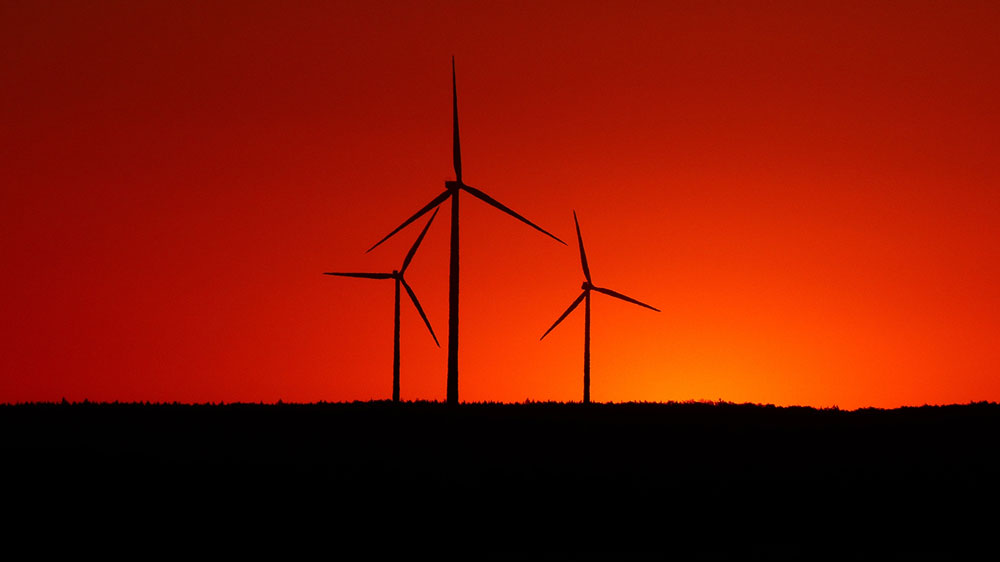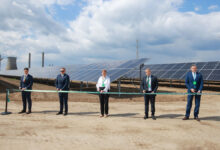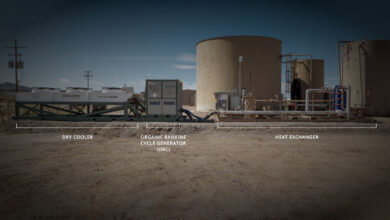Historical record in the EU
Investments of EUR 14.8 billion in new onshore wind energy projects
The renewable energy industry has created over 500,000 new jobs at global level in 2017, which means an increase by 5.3% compared to 2016, according to data published by the International Renewable Energy Agency (IRENA). The total number of persons hired in this sector (including large hydropower plants) reached at the end of last year 10.3 million globally, exceeding the figure of 10 million for the first time. In this entire time, investments in this industry fell due to cost optimization. For now, in Romania projects are blocked in this field.
China, Brazil, the US, India, Germany and Japan remain the largest employers in the world in the renewable energy sector, accounting for over 70% of total jobs in the industry at global level. Although growing numbers of countries are reaping the socio-economic benefits of renewables, the bulk of manufacturing takes place in relatively few countries and domestic markets vary enormously in size. 70% of all jobs in the renewable energy sector are in Asia.
“Renewable energy has become a pillar of low-carbon economic growth for governments all over the world, a fact reflected by the growing number of jobs created in the sector,” said Adnan Z. Amin, director-general of IRENA, quoted by the international press. “Fundamentally, this data supports our analysis that decarbonization of the global energy system can grow the global economy and create up to 28 million jobs in the sector by 2050,” he also mentioned.
Romania, not included in EY’s ranking
China remains the first within the renewable energy country attractiveness index for the third time in a row, while the US and Germany overtook India to ensure the second and third place respectively, a recent study by EY shows. In South-Eastern Europe, the index includes Turkey (17th place), Greece (34th) and Poland (country newly included in the index, on the 36th place).
As regards Romania, it was not included in this ranking. The renewable energy country attractiveness index (RECAI) is one of the useful tools provided by EY analysts, as it classifies the attractiveness of renewable energy worldwide.
The share of renewable energy will increase
Solar energy costs have fallen over the past decade by more than 60%, making these investments extremely attractive for companies. In this context, China, which also holds the title as the largest polluter in the world, has proposed that the share of renewable energy in total energy production should reach 20% by 2030.
According to the recommendation adopted on 17 January this year by the European Parliament, EU Member States must reach a target of 35% renewable energy by 2030.
The EU: Investments of EUR 22bn
Investments in wind energy in the European Union last year reached the lowest level of the past three years. Expenses for new wind energy production capacities in Europe fell by one fifth in 2017, according to the annual report of the profile association WindEurope.
The representatives of the association estimate that this reduction is generated by the fact that the wind sector cuts costs and becomes more efficient as governments reduce subsidies.
According to WindEurope’s report, investments in new onshore and offshore wind projects in the European Union dropped 19% last year, to EUR 22.3 billion, from a record high of EUR 27.5 billion in 2016, and also, less than the amount recorded in 2015, of EUR 26.2 billion.
However, lower investments made in 2017 have funded the construction of new record capacities of 11.5 Gigawatts (GW), up from 10.3 GW in 2016, which means that last year the cost went down to EUR 1.9 billion for each GW of new capacities, from EUR 2.7 billion per GW in 2016, the WindEurope’s report says.
“Cutting costs along the value chain of industry and increasing competition inside the industry have made it possible for investors to finance more capacity for less money,” WindEurope said.
Germany was the largest investor in wind energy in 2017, followed by Spain, the United Kingdom and France. Also, investments in new onshore wind projects have reached a historic record of EUR 14.8 billion.
Currently, the EU has a total installed capacity in wind power of 169 GW, which is outpaced only by natural gas capacities. Wind power is responsible for 18% of the total installed capacity in the EU.
2017 annual figures
- Europe installed 15,638 MW of new wind power capacity during 2017, an increase of 25% compared to 2016 annual installations. 12,484 MW were onshore, and 3,154 MW were offshore.
- 2017 was a record year for both onshore and offshore installations. Onshore installations grew 14.3% while offshore grew 101% compared to 2016.
- Wind power installed more than any other form of power generation in Europe in 2017. Wind power accounted for 55% of total power capacity installations.
- Renewable energy accounted for 85% of all new EU power installations in 2017: 23.9 GW of a total 28.3 GW of new power capacity.
- With 336 TWh generated in 2017, wind power covered an average 11.6% of the EU’s electricity demand.
- 2017 saw EUR 22.3bn in new investments announced in wind energy. This will finance the development of 11.5 GW of new wind farms. EUR 14.8bn of this was for onshore wind, and EUR 7.5bn for offshore. Overall, this was 19% less than the total investment in 2016.
- Wind energy investments accounted for 52% of the new clean energy finance in 2017, compared to 86% in 2016.
Trends and cumulative installations
- There are now 168.7 GW of installed wind power capacity in the EU: 153 GW onshore and 15.8 GW offshore.
- Wind energy now accounts for 18% of EU’s total installed power generation capacity.
- The total net EU-installed power generation capacity increased by 18.8 GW in 2017 to 937 GW.
- Conventional power sources such as fuel oil and coal continue to decommission more capacity than they install. The amount of decommissioned gas-fired generation capacity was almost equal to the amount of newly-commissioned gas-fired generation capacity.
«6 EU COUNTRIES HAD A RECORD YEAR IN WIND ENERGY INSTALLATIONS»
«55% OF NEW POWER CAPACITY IN THE EU CAME FROM WIND»
«85% OF NEW POWER CAPACITY IN THE EU CAME FROM RENEWABLES»
«WIND REMAINS THE 2nd LARGEST POWER GENERATING CAPACITY IN THE EU»
«80% OF WIND POWER IN THE EU WAS INSTALLED IN JUST 3 COUNTRIES: GERMANY, THE UK AND FRANCE»
«168.7 GW OF WIND POWER ARE NOW INSTALLED IN THE EU»
Country highlights
- Germany installed the most wind power capacity in 2017, with 42% of the total EU new installations.
- 16 EU countries have more than 1 GW of wind power installed. Nine of these have more than 5 GW installed.
- Six EU countries had a record year in new wind energy installations in 2016: Germany (6.6 GW), the UK (4.3 GW), France (1.7 GW), Belgium (476 MW), Ireland (426 MW) and Croatia (147 MW).
- Denmark is the country with the largest share of wind energy in its electricity demand with 44%. Germany registered the highest annual increase from 16% to 20% of wind energy in its electricity demand.
Projects blocked in Romania
The success story of wind energy investments started in Romania after the Executive launched the most spectacular subsidy scheme, but it ended abruptly in 2013 after it was decided, through an Emergency Ordinance, to postpone the granting of green certificates, in the attempt to keep price increases under control. This goal has been reached, but banks have stopped funding and projects have been blocked. That’s how no new project has been launched since 2013, investors have begun to report losses and many wind farms have been put on sale.
A helping hand was given to this sector in the spring of last year, when the Government issued a GEO that prolongs the validity of green certificates in the market until 2032.
For 2017 and 2018, of the total green certificates in the market, only half are covered by the quota and have buyers. The huge surplus of certificates in the market will create chaos in the energy system if the government does not change green energy legislation, said Razvan Nicolescu, a senior consultant at Deloitte and former energy minister.
Romania has about 5,000 MW installed in wind and solar power plants, with a total installed capacity in the energy system of 20,000 MW. The energy produced by renewable sources is cheap because it is subsidized by all Romanian energy consumers through the green certificates system.
By law, each MWh produced in wind and solar power plants is automatically taken over in the system and receives subsidy. 1 MWh of wind power receives half green certificate, while 1 MWh of solar power receives three certificates.







